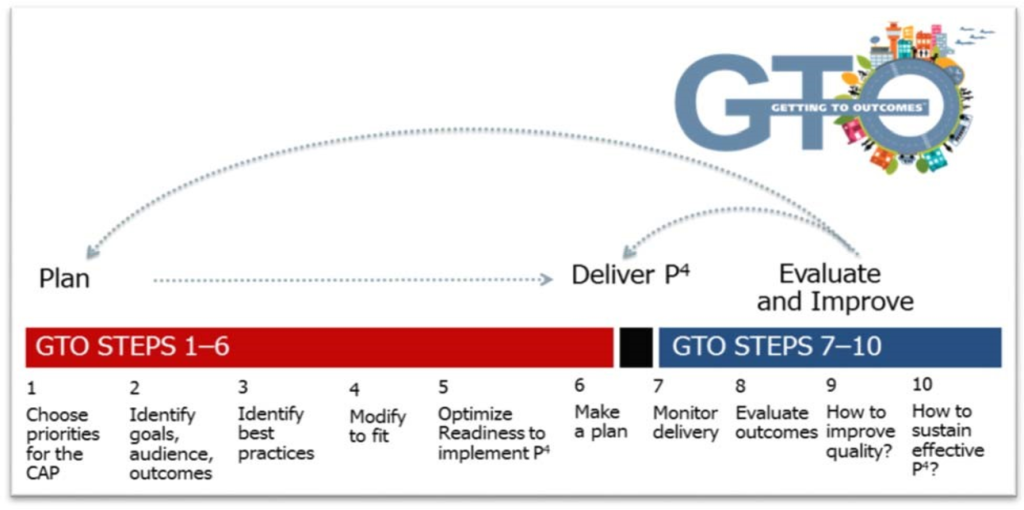The “Getting to Outcomes” (GTO) model is a unique program and evaluation framework designed to facilitate effective planning, implementation, and evaluation of programs. It is a widely recognized framework that provides practical and straightforward assistance to organizations and communities in achieving their desired outcomes.
What is Getting to Outcomes (GTO)?
Getting to Outcomes is a set of steps to assist practitioners and communities in the successful implementation of evidence-based practices, enhancing their readiness to prevent and address critical societal problems. The GTO model consists of ten steps that blend strategic planning, quality management, and evaluation into a comprehensive and iterative process. It is a model for action, serving as both a prevention planning system and a capacity-building tool that can transform organizational cultures and practices.
The ten steps of GTO are:
- Identifying specific needs and goals.
- Setting clearly defined goals and desired outcomes.
- Selecting evidence-based approaches that align with set goals.
- Adapting the chosen approach to the local context.
- Developing the readiness needed for this approach (skills, resources, etc.)
- Developing a comprehensive plan for implementation.
- Implementing the plan, keeping in mind quality control.
- Conducting an outcome evaluation to assess whether the desired goals and outcomes have been achieved.
- Using continuous improvement models to make strategic and tactical changes
- Sustain the changes over time.
Each step builds on the previous ones, creating a cyclical process for continuous improvement and refinement.
The Importance of GTO Framework
The GTO framework’s primary strength lies in its focus on outcomes rather than outputs. While traditional models tend to emphasize activities, the GTO model emphasizes understanding the link between these activities and the desired results. This focus aligns with modern evaluation philosophies that prioritize outcome and impact evaluation.
Moreover, GTO’s stepwise process brings structure and clarity to what can often be a complex and challenging process. It provides a systematic way to translate research into practice, which is a critical yet often overlooked aspect of implementing effective interventions.
GTO in Action: A Practical Application
The GTO approach has been used in a variety of fields, including public health, education, and social services. For example, a public health department could use the GTO framework to address a community’s high obesity rates. They would first identify the specific problem (Step 1), set goals (e.g., reducing obesity rates by 20% over five years), and then develop a logical model that links program activities (e.g., community exercise programs, nutrition education) to the desired outcomes (Step 3). The department would then identify evidence-based interventions (Step 4), adapt them to the local context (Step 5), and plan for their implementation (Step 6).
Once the program is running, the department can then assess how well it is being implemented (Steps 7 and 8), evaluate its effectiveness in achieving the desired outcomes (Step 9), and finally, determine the impact on the obesity rates in the community (Step 10).

The Future of GTO
As we continue to grapple with complex societal challenges, frameworks like GTO are becoming ever more crucial. The emphasis on results and a systematic and evidence-based approach make it an incredibly powerful tool for social change.
The GTO model offers a promising roadmap for organizations seeking to bridge the gap between research and practice, ultimately leading to more effective, sustainable programs. By incorporating the GTO model into planning and evaluation processes, we can ensure that our efforts are directed towards meaningful outcomes that truly make a difference.

